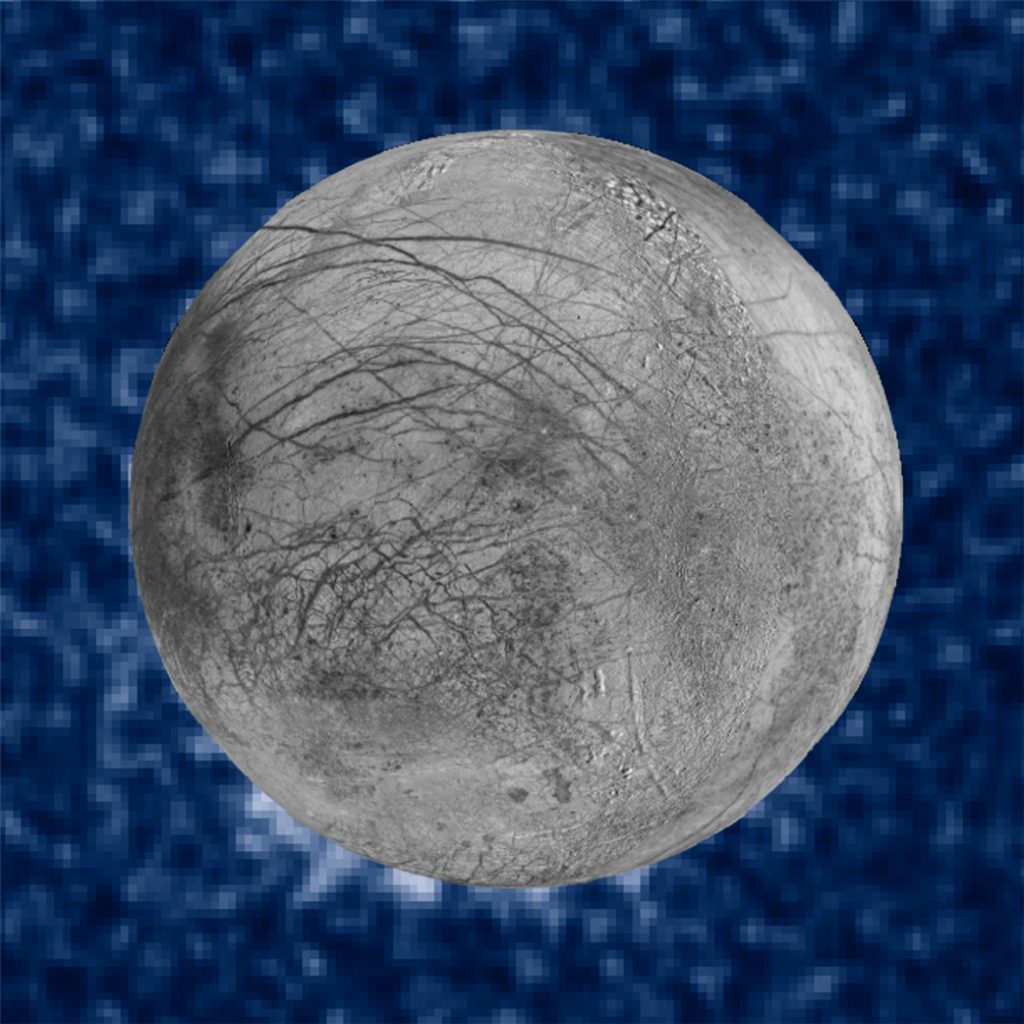You might have to squint your eyes a little to see it but scientists are pretty sure Jupiter’s moon Europa is spewing out plumes of water from its southern side. The picture of the phenomenon was taken by the Hubble Space Telescope and could have a huge impact on the way we search for extraterrestrial life on the ice-covered moon.
“Are they definitive? No. Are they compelling? Quite. Do we need missions to Europa to find out more about this beautiful little ocean world? Absolutely,” said Kevin Hand, one of the study’s co-authors and a scientist with NASA, to National Geographic.

Lured by the promise of balmy oceans of the likes perfect for housing alien microbes, scientists have for some time planned to send a probe to explore Europa further. The only catch is those oceans are tucked underneath a hard layer of ice of unknown thickness. So NASA planned to drill through the surface to reach the watery under layer.
But if the moon is spitting up the water through geysers, those plans suddenly require a whole lot less engineering. The probe won’t even need to land on the surface. It can simply fly by and sniff up the water vapors for its analysis. Easy peasy, right?
A team led by William Sparks of the Space Telescope Science Institute in Baltimore spotted the phenomenon in early 2014 under ultraviolet light. It wasn’t easy to capture, however. They observed the plumes a total of three times out of 10 attempts in 15 months as it passed in front of Jupiter.
While the team is taking care not to jump to conclusions on what they’re seeing in the pictures, the finding does back up a previous observation made by Hubble in 2012. A different team of scientists saw what looked like 125-mile high geysers pumping out of the south polar region of Europa’s surface and creating an unexplained aura around the sphere.
To get more of a definitive look, NASA plans to capture infrared images using the James Webb Space Telescope set to launch in 2018. And they plan to get a probe to Europa by 2022 – a deadline set by Congress.
But the fact that it was so tricky to observe the plumes indicates we need to better understand their intervals. As uninvited guests, we don’t want to make the mistake of showing up at the wrong time.
And Europa isn’t the only moon that’s got our attention. We already found plumes of water emanating from Saturn’s moon Enceladus in 2005. One-upping Europa, NASA thinks Enceladus might also have ongoing hydrothermal activity inside its subterranean oceans.

Even Jupiter’s largest moon Ganymede has got scientists thinking it could be hiding a giant subsurface ocean as well. We may need to rethink how wet our solar system really is. Assuming all these places have some chance of housing extraterrestrial life, we’ve sure got a lot of destinations to cover on our travel list.
We’ve always questioned whether life is unique to Earth. Later, we started thinking it’s likely life does exist elsewhere but, in that case, where the heck is everyone? It’s exciting to think the answer might just be swimming under the surface of one of these watery moons.











